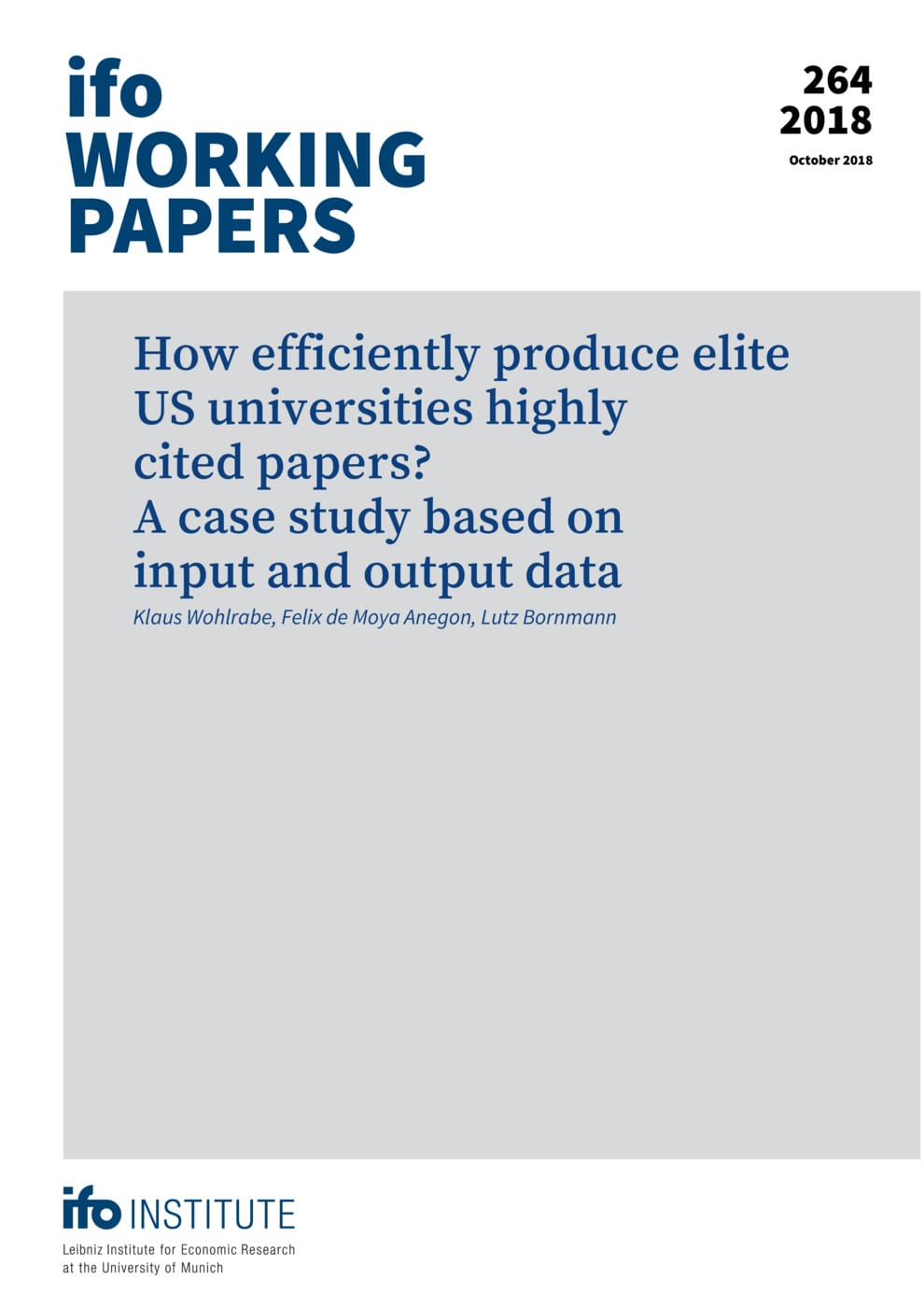How efficiently produce elite US universities highly cited papers? A case study based on input and output data
ifo Institute, Munich, 2018
ifo Working Paper No. 264

While output and impact assessments were initially at the forefront of institutional research evaluations, efficiency measurements have become popular in recent years. Research efficiency is measured by indicators that relate research output to input. The additional consideration of research input in research evaluation is obvious, since the output should be related to the input. The present study is based on a comprehensive dataset with input- and output-data for 50 US universities. As input, we used the amount of budget, and as output the number of highly-cited papers. We employed Data Efficiency Analysis (DEA), Free Disposal Hull (FDH), and two more robust models: the order-m and order-α approach. The results of the DEA and FDH analysis show that Harvard University and Rice University can be called especially efficient compared to the other universities. While the strength of Harvard University lies in its high output of highly-cited papers, the strength of Rice University is its small input. In the order-α and order-m frameworks, Harvard University remains efficient, but Rice University becomes super-efficient. We produced university rankings based on adjusted efficiency scores (subsequent to regression analyses), in which single covariates (e.g. the disciplinary profile) are held constant.